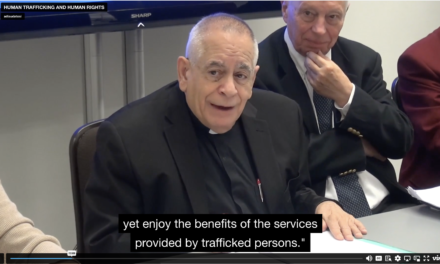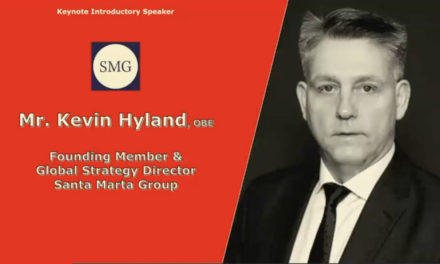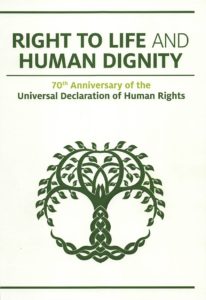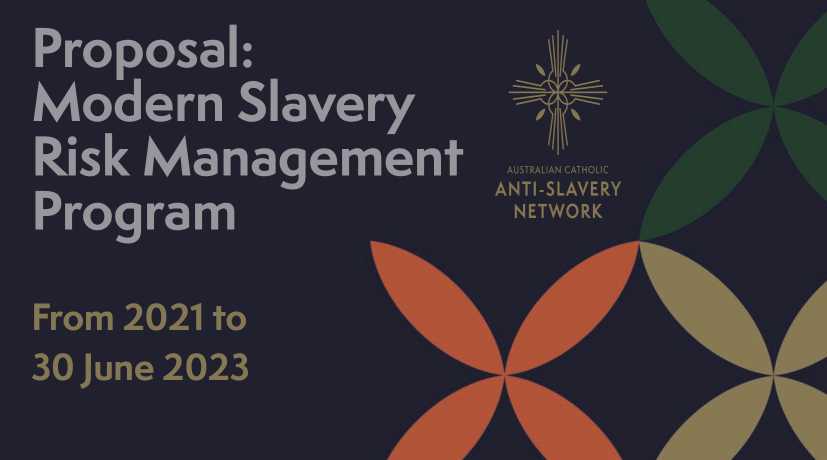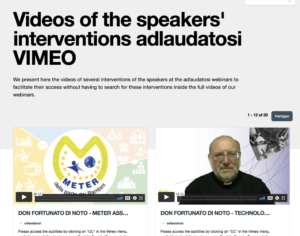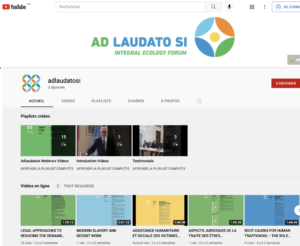Human trafficking in sports
“This trade is evil. Any trade that makes you exploit people and destroy their future is evil. It is another version of slave trade.” Matthew Edafe, victim of trafficking (Mission89).
Introduction
The problem of sport trafficking is an area that has received limited attention from national Governments and sport organisations. There is an important lack of evidence on the nature and the scale of this problem.
Let us begin by defining more precisely the term human trafficking: it is encompassed in the umbrella term “modern slavery” which can be understood as the illegal and severe exploitation of people for personal or commercial gain. It is an umbrella term that covers various forms of human rights abuses including forced labour, bonded labour, sexual exploitation, domestic servitude and human trafficking. Human trafficking is the process by which people are exploited.
Three elements constitute modern slavery:
- Act (for example recruitment and transportation of persons);
- Means (for example use of force, coercion, deception);
- Purpose (exploitation) must be present to constitute the crime of human trafficking.
However, in the case of child trafficking (any person under 18 years of age) the “Means” element is not required
While extant research has focused on various aspects and purposes for which people
are trafficked, one under-researched area is sports trafficking. However, as pointed out by the US Department of State 2020 Trafficking in Persons (TIP) Report, “the confluence of athletes’ desire to play, their families’ hopes of escaping poverty, agents’ desire to profit, leagues’ interest in marketing competitive players and games, and teams’ eagerness to find young talent all create an environment that, if left unregulated, could be ripe for traffickers to exploit.”
It is thus an area that needs to be urgently addressed.
- Estimated numbers
It is difficult to give exact numbers on the scale of trafficking in sports, as there is a lack of verifiable data and research on this topic.
The US Department of State included trafficking in sports for the first time in their 2020 TIP Report, and estimates that “within Europe’s soccer industry alone, it is estimated there are 15,000 human trafficking victims each year”, mainly from West Africa.
Some NGOs, like the French NGO Foot Solidaire, suggests that in 2007 there were over 7,000 Africans in France who were unsuccessful in signing to a club, while an undercover media investigation suggested that there were over 20,000 aspiring footballers trafficked into Europe.
Due to this lack of data, the scope of trafficking in sports is difficult to determine: trafficking in sports is predominantly found in football, baseball, ice hockey, basketball, but also in lesser researched sports.
- Forms of trafficking in sports
You may have heard of the Olympic star Sir Mo Farah, who revealed earlier this year that he was trafficked to the UK as a child to work as a domestic servant (https://www.bbc.com/news/uk-62123886 ). Other cases have received media attention, like the former Premier League football player, Al Bangura, who was tricked into leaving for the UK to become a professional football player, but was lured into male prostitution (https://www.bbc.com/news/uk-34849619 ).
In the global sports business, modern forms of slavery may manifest in different ways. If we think about supply chains, mega sporting events and the infrastructure they require, and the pursuit of sporting talent, it soon becomes clear that there are a myriad of opportunities for labour exploitation. For example, the manufacture of sports products such as uniforms and memorabilia, the construction of buildings used to host sporting activities, and the recruitment of athletes.
The trafficking of migrant athletes, often children, in sport is a problem prevalent across the global sports industry. According to Brackenridge, Fasting, Kirby and Leahy (2010) “Trafficking in the context of sport involves the sale of child athletes, usually across national boundaries and for profit. This has been described as a new form of child slavery that leaves players in a precarious legal position.”
According to migration expert James Esson, there are two distinct processes of trafficking:
- Trafficking in sports: young players, or their family, pays an agent or an intermediary saying he has contacts with professional clubs abroad. Here, players obtain a contract or the opportunity to try out with a club, though it involves degrees of exploitation.
- Trafficking through sports: According to Esson (2020, p.1) ‘[T]he alleged interest from a foreign club is bogus, and the intermediary abandons the player on arrival in a destination country. This is often after taking the player’s documentation and money. Once the precarious nature of their situation is realized, the player is often said to
be too ashamed to return home. He remains in the destination country illegally without any means of subsistence.’
As the 2020 TIP Report points out, “the exploitative scheme of recruiting, building trust and dependency, and taking control upon a job offer is universal”. Like other forms of trafficking, agents take advantage of athletes and their families’ aspirations to become successful and better their livelihood.
Though it is mostly boys being lured into sports trafficking, the development of women’s sports, notably football, also attracts young girls.
Some authors suggest that trafficking in sports is a form of labour trafficking involving clandestine networks of actors including agents, intermediaries, and powerful sports bodies who exert ownership and control of young athletes.
Labour migration is an established practice in the sports industry, where athletes move across or within borders. Many important sport bodies recruit players in South America, Africa or Asia. Many individuals are also trafficked from these regions, mostly to the United States or Europe.
A large proportion of individuals are reportedly trafficked from Africa into Europe to play football. This is due to the attraction that European football clubs have, and also to the earning potential that exists.
Although trafficking of West African players into Europe appears to be the most common migration pattern for football, alternative migration routes are said to exist yet have been researched less, and needs thus further investigation.
In the case of the United States, there have been reports of baseball players being trafficked from Latin America.
a) Nature of recruitment
Many migrant athletes are trafficked with the promise of a lucrative professional career in sports abroad.
Trafficking in sports take advantage of the dreams and aspirations of young people to find a ways out of poverty and improve their own and their family’s socio-economic conditions.
This attracts false agents and intermediaries ready to exploit these young people’s dreams: an agent may offer them an opportunity to try out for a professional club abroad, in exchange for money to cover the placement fees and travel costs. Some agents also recruit via social media platforms.
Some people are recruited through unlicensed sport academies. In order for young players to attend they are required to pay excessive fees or may enter into suspect agreements with their ‘coaches’.
The trafficking for baseball players on the other hand attracts more organized and large-scale trafficking, as talented players can receive greater awards and more lucrative contracts. This means that these players, once they have signed a professional contract, will risk to remain under the trafficker’s control.
As pointed out by the 2020 TIP Report “The dream of competing in these countries, in conjunction with inexperience, hopes of escaping poverty, the athlete’s desire to play high-level sports, and potential international fame makes young people easily exploitable to sports trafficking”.
b) Nature of exploitation
When a person is recruited by an agent, he may travel to the destination country through legal channels, using short-terms tourist visas, or via illegal channels, using false passports and false travel documents. When they arrive at destination, the agent may keep the persons money, passport and other important documents.
In some cases, the person is abandoned during transit or upon arrival in the destination country. Without passport or money, their stay is illegal, and they have no means of going home. This may lead these young athletes to engage in criminal activity, homelessness and even prostitution to survive. In these circumstances, these young people also become more vulnerable to other forms of trafficking and exploitation.
In other cases, the athlete may try out for a club by unofficial and unregulated football training centres, and then being abandoned, facing the same difficulties as mentioned before.
Some athletes may end up getting a contract, which terms will usually be negotiated by the false agent in his own favour. He does this by using the sense of trust and dependency he has managed to form with the young athlete.
This shows how athletes may be lured through sports but exploited in other means: some can be forced to work in order to pay off debts putting the victim in a “debt-based coercion”, some can be victims of sexual exploitation.
In 2016, the UN Special Rapporteur on the sale and sexual exploitation of children noted that forced labour of children is strongly linked to sport since “[t]he sale of child athletes for competitive training and ultimately profit amounts to a form of sale of children for the purpose of forced labour. It generally features an imbalance of power, in which financial power is used to draw children and their families who are in economic hardship into unfair practices over which they have no control”.
The young athletes may not report their trafficker out of fear of repercussion on their families. There is also a sense of shame and embarrassment for falling victims to the trafficker’s false promises. This also explains the lack of data on trafficking in sports, as so many victims never come forward.
- Prevention
As previously mentioned, there is an important lack of data on the problem of trafficking in sports. One problem that arises is the difficulty of defining trafficking in sports in the light of the UN’s Palermo Protocol definition: for it to be considered human trafficking, the element of exploitation (the Purpose) must be present. However, in the context of trafficking in sports, the element of exploitation is not always apparent. This can place trafficking in sports outside the scope of human trafficking as defined by the Palermo Protocol.
However, authors suggest that in some cases there are various degrees of exploitation, deception and fraud. Authors like McGee noted that there is a “cocktail” of deception used by agents to recruit young players, coupled with corruption, fraud and exploitation to “auction the child off to sports franchises and clubs around the world, in a quest to maximize the financial return on their investment”. Deception is also used to lure parents into signing fraudulent contracts.
There is also a poor understanding of the exploitation that can occur during the transfer of the athletes to the destination country, and how it differs with lawful and unlawful migration, like for example human smuggling where the persons agree voluntarily to being moved to another country.
Another issue may arise when young athletes are moved to other countries by their parents or with their consent. In these cases, the young people may by subject to intense training to increase their chance of success. There is a need for research on this topic to understand how these practices can be seen as forms of trafficking.
The international community is starting to give attention to the problem of trafficking in sports: the UN Convention on the Rights of the Child and the International Labour Organization (ILO) conventions on child labour all recognize the fundamental rights of the child, which can be linked to trafficking in sports as it particularly targets young athletes.
The 2016 UN Special Rapporteur on the sale and sexual exploitation of children have stated that “the sale of child athletes for competitive training and ultimately profit amounts to a form of sale of children for forced labour”.
2017 marks the adoption of the Kazan Action Plan, based on the International Safeguards for Children in Sports, where national Governments commit to link sport policy development to the 2030 Agenda of the Sustainable Development Goals (SDGs). This document calls on Stated to protect children, youth and other vulnerable groups in the context of sports in relations to the SDGs targets 5.2 (eliminate all forms of violence against all women and girls in public and private spheres, including trafficking and sexual and other types of exploitation), 8.7 (take immediate and effective measures to eradicate forced labour, end modern slavery and human trafficking and secure the prohibition and elimination of the worst forms of child labour,) and 16.2 (end abuse, exploitation, trafficking and all forms of violence and torture against children).
Despite this, there are various challenges to addressing sports trafficking:
- First, the absence of reliable data: due to this, the true scale and nature of the problem is difficult to assess, leaving people and organizations ignorant of the issue.
- Second, the lack of Government enforcement and poor oversight by sport governing bodies: one difficulty is that sports trafficking is a cross-border activity, involving thus different legal and regulatory systems.
- Third, trafficking in sports can be difficult to detect. As there can be voluntary aspects in sports trafficking, the issue of whether an athlete was exploited arises. Because many young people dream of becoming an international athlete, they willingly accept to leave their origin country to pursue this dream. This poses the question whether exploitation occurred or not. Nevertheless, exploitation, deception and coercion can occur to encourage an athlete to leave their home. However, in the case of children, it is irrelevant whether they consented to circumstances that led to them being trafficked.
In the cases where the young player signs a contract, it can still be considered trafficking, as “[W]hat allows this process to be defined as trafficking is that these contracts are often highly exploitative and unfavourable for the player with agents taking as much as 50 percent of the player salary for the duration of the contract” (Mason et al, 2019, pp.746–747).
How can trafficking in sports be prevented? Many preventive measures exist, but remains ineffective:
There is an ongoing debate involving international, regional and national governing bodies of the game, sport and non- sport NGOs, politicians, the media and the United Nations around the protection of young athletes and theirs rights.
FIFA have created guidelines to prohibit international transfers in football of children under the age of 18. However, it comes with five exceptions:
- parents moving to a new country in which the new club is located for reasons not linked to football;
- the transfer takes place within the EU or EEA;
- proximity to the national border;
- the player flees his country of origin for humanitarian reasons without parents and is temporarily permitted to reside in the country of arrival;
- and the player is a student and moves without his parents to another country temporarily for academic reasons.
However, these rules have not been adequately enforced. Authors such as Firth (2019) suggests that, in the case of Premier League clubs “there is no evidence of clubs showing leadership in the fight against modern slavery”.
As such, clear and strict regulations should be designed and enforced.
At the civil society level, some NGOs have also attempted to address sports trafficking. The NGO Mission 89, who protects young athletes in the name of sport, have produced initiatives to place the rights of the child at its forefront, holding all stakeholders accountable, and to raise awareness about sports trafficking. One important initiative is the “Framework on Safeguarding Children from Trafficking in Sport”.
Another important initiative are anti-trafficking campaigns, both at sporting events and in origin countries to raise awareness among young player on the dangers of false agents. This is done by NGOs such as “It’s a penalty”.
NGOs and civil society at large advocate for a multi-agency approach to tackling trafficking in sports. This is needed notably to address the root causes as to why young people are ready to leave their origin country at any cost.
Mission 89 notes that sports associations, Governments, border agencies, transport companies, sport agents and other actors must cooperate and also be trained on the issue of trafficking in sports.
The University of Nottingham Rights Lab has issued a series of recommendations to prevent and tackle trafficking in sports, in their 2021 Report “The problem of sports trafficking: setting an agenda for future investigation and actions”. Some of the will be presented here:
- Awareness raising: sport clubs, associations and governing bodies should raise awareness of the issue of trafficking among their staff but also among professional athletes
- Clear regulations on ethical recruitment: the recruitment practices of young athletes should follow modern slavery, human trafficking and labour and employment rights and standards. International standards and regulations on children’s rights should also be followed, as trafficking in sports mainly affects young boys and girls.
Moreover, additional research is needed on trafficking in sports. NGOs like Mission 89 also point out that there is a need of awareness raising and education among young athletes and their parents about safe pathways to professional sports careers, as to avoid exploitation and trafficking.
However, sports organisations and association do not have the power to tackle the issue of trafficking in sports alone, as the main driving force to combat it must come from Governments, as they are the only ones who have jurisdiction to pursue criminals. According to the 2020 TIP Report, “Governments should acknowledge when their national sport leagues or associations in their country are not adequately protecting athletes and investigate cases where agents violate anti-trafficking and labor statutes”. Furthermore, the TIP Report suggests various ways in which Governments could prevent and tackle trafficking in sports:
- increasing coordination between their youth or child services programs and their sports programs;
- training consular officers on common indicators or schemes traffickers use within student or sports visas programs;
- and pursuing partnerships or dialogues with sports agencies and leagues to begin to address this form of human trafficking, such as through nationwide public awareness initiatives.
We would like to wish you success in all your endeavor, and we would be happy to contribute by organizing a webinar, or more, on human trafficking in sports. As you may know, we already have 22 webinars on the topic of human trafficking and a lot of followers.
Bibliography:
Brackenridge, C., Fasting, K., Kirby, S., and Leahy, T (2010) Protecting Children from Violence in Sport, Innocenti Publications [online]. Available at: https://www.unicef-irc.org/publications/ pdf/violence_in_sport.pdf
Esson, J. (2020) ‘Playing the victim? Human trafficking, African youth, and geographies of structural inequality,’ Population, Space and Place 26(6): pp.1–12
Firth, D. (2019) ‘The response of Premiership football clubs to the Modern Slavery Act,’ Evidence submission to the All Party Parliamentary Group on Sport, Modern Slavery and Human Rights [online]. Available at: https://www.appgshr.org.uk/wp-content/ uploads/2019/08/The-responce-of-Premiership-clubs-to-modern-slavery-v1.pdf
Mason, C., Darby, P., Drywood, E., Esson, J. and Yilmaz, S. (2019) ‘Rights, Risks and Responsibilities in the Recruitment of Children within the Global Football Industry,’ International Journal of Children’s Rights 27: pp.738–756
McGee, D. 2012. Displaced childhood: Labour exploitation and child trafficking in sport. In: Quayson, A. & Arhin, A. (eds.) 1 ed. Labour Migration, Human Trafficking and Multinational Corporations: The Commodification of Illicit Flows. New York: Routledge, pp.71–90.
McGee, D. 2015, ‘What the next FIFA president could do to tackle child trafficking in football’, The Conversation, 11 December [online]. Available at: https://theconversation.com/what-the- next-fifa-president-could-do-to-tackle-child-trafficking-in-football-52016
Report Of The Special Rapporteur Of The Human Rights Council On The Sale Of Children, Child Prostitution And Child Pornography (2016), Sale of children, child prostitution and child pornography, A/71/261. Available on: https://ap.ohchr.org/documents/dpage_e.aspx?si=A/71/261
U.S. Department of State (2020) Trafficking in Persons Annual Report [online]. Available at:https://www.state.gov/wp-content/uploads/2020/06/2020-TIP-Report-Complete-062420- FINAL.pdf
University of Nottingham Rights Lab (2021) The problem of sports trafficking: setting an agenda for future investigation and action. Available on: https://www.nottingham.ac.uk/research/beacons-of-excellence/rights-lab/resources/reports-and-briefings/2021/august/the-problem-of-sports-trafficking.pdf





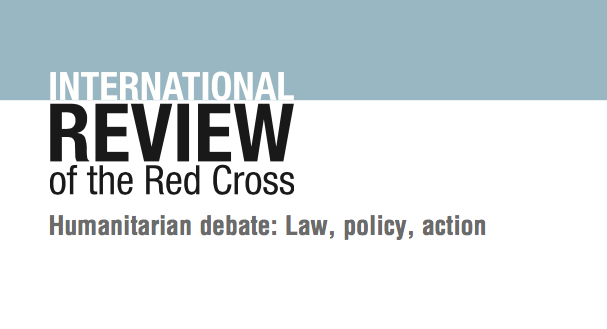

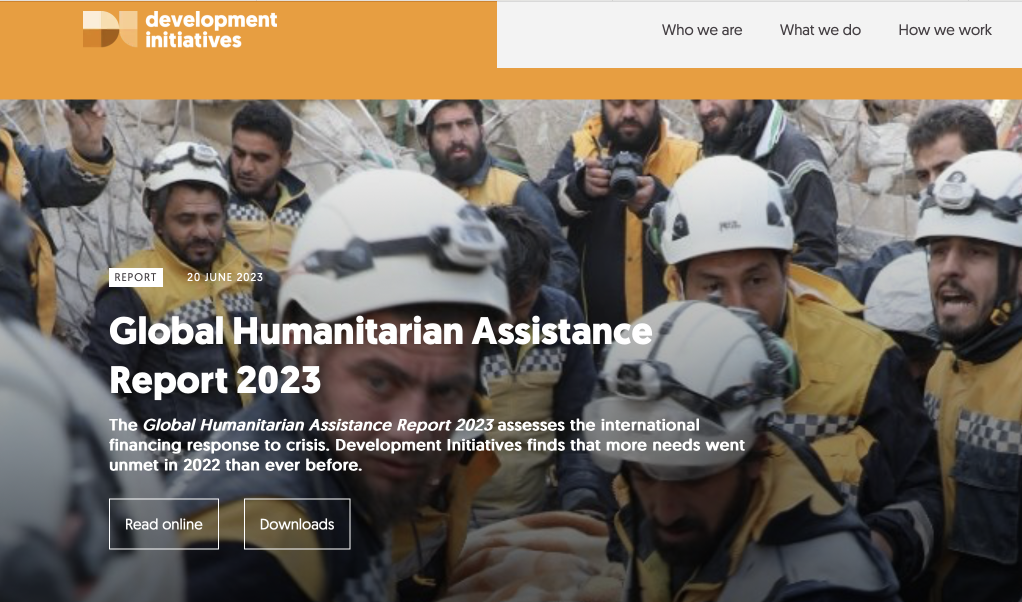
![Sound of Freedom [Official Trailer]](https://christusliberat.org/journal/wp-content/uploads/2023/04/maxresdefault-440x264.jpg)
